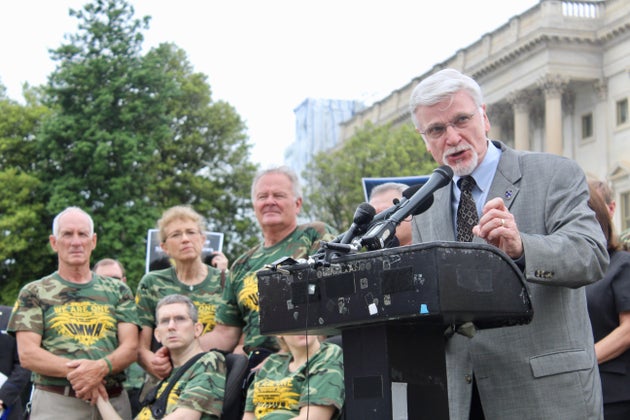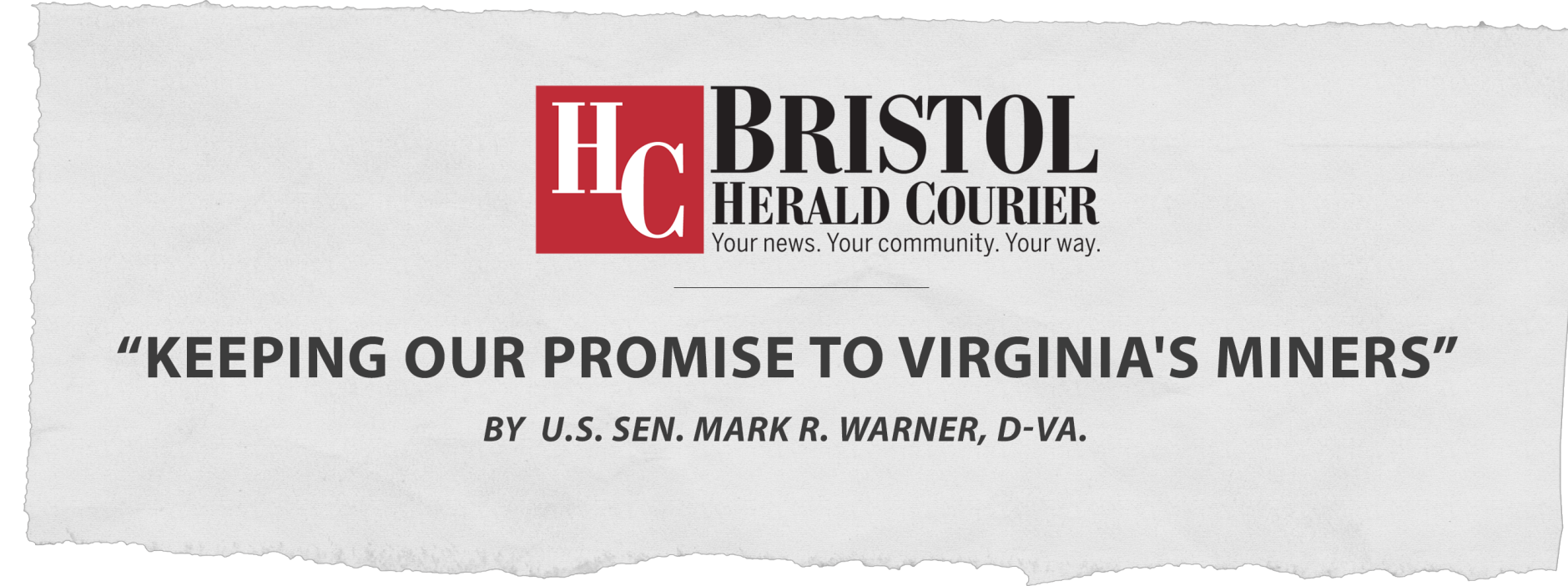Source: Pittsburgh Post-Gazette
WASHINGTON — Dave VanSickle spent most of his life underground cutting and loading coal.
Some days were grueling, but he got through the worst of them by reminding himself he was working toward a worry-free retirement with a pension guaranteed to sustain him through old age.
That financial security is about to be yanked out from under him unless Congress acts.
Mr. VanSickle, 63, of Uniontown and other members of United Mine Workers of America, have been lobbying lawmakers in Washington to prevent their pension fund from the insolvency that is expected to hit by 2022.
They want Congress to shore up their pensions using surplus funds from a federal program that reclaims and restores abandoned mine sites.
However, some lawmakers including U.S. Sen. Mike Enzi, R-Wyoming, say other industries’ pension funds are insolvent too, and they want to address pension reform more broadly.
“Sen. Enzi believes miners and former miners deserve respect and appreciation, but he remains concerned about any legislation that encourages or helps private companies to rely on taxpayer funds when unions and companies fail to deliver on their promises,” said Enzi spokeswoman Rachel Vliem.
“He believes bailing out any private pension would set a dangerous precedent,” she said. “This bill would only bail out one of the hundreds of union pension plans that we know are underfunded.”
UMWA also would like to see a broader solution that helps retirees from other industries, but they say it isn’t likely to come quickly enough for its members.
Lawmakers like U.S. Rep. David McKinley, R-West Virginia, say it makes sense to enact a fix for miners while Congress hashes out a broader solution.
“Other people, they’re saying, ‘Well, we’ve got to have a comprehensive solution.’ That would be a great day, but to me it’s just a smokescreen,” Mr. McKinley said.
Miners point to a number of reasons they deserve special treatment.
“Everyone should be helped down the road but our pension plan is one of the smallest, it’s the only one guaranteed by the government, and it’s running out the soonest,” Mr. VanSickle said.
Their pension fund is on track to collapse within 3½ years. Of all the major mining companies contributing to the pension fund only one — Murray Energy — is still in operation. The fund has about $2 billion in assets but only $15 million comes in each year while about $600 million goes out.
Miners say the federal government promised them lifetime pension benefits in 1946 when Interior Secretary Julius Krug negotiated an end to the nationwide mining strike by agreeing to create health and retirement funds.
There is enough of a surplus in the Mine Reclamation Fund to cover the cost of pensions, miners said.
“We just want what was promised to us. You work your whole life and they pull the rug out from under you,” said Tony Kodric, 61, of Uniontown who worked in two mines from 1977 until 2013 when he tore a rotator cuff and bicep in a mining accident that left him disabled.
If the UMWA pension plan collapses, union members would be eligible for benefits from the federal Pension Benefit Guarantee Corporation, which insures private pensions, but payments would cover cover only a portion of lost benefits — often less than half. And PBGC is headed toward insolvency, too. The latest PBGC annual report projects that its multi-employer program could reach insolvency by 2025.
That could happen much sooner if miners start drawing from it, too, union leaders say.
Multiple generations’ livelihood is at stake, said Mr. Kodric, whose mother also gets pension payments that his deceased father earned from his years in the mines.
Retirees like Mr. VanSickle have taken part-time jobs to put money aside in case their pensions collapse.
He spent a recent morning dragging a watering hose between rows of boxwoods, coneflowers and red drift rosebushes as he worked to keep the soil moist at Miller’s Greenhouses in Smithfield. Other days he delivers mulch or large plant orders.
Mr. VanSickle likes the work but he would rather be cuddling his newest grandchild or watching his older ones play baseball.
Two or three days a week at Miller’s gives him just enough of a cushion to keep him from worrying about how he’ll make ends meet if his pension disappears. That’s something he never thought he’d have to worry about back when he voted with his union to sacrifice raises for better pensions.
“You base your spending on what you know you have coming in when you retire and then — bang! — something comes up so you do what you can to get things back in order,” Mr. VanSickle said.
His house needs a new roof and he’ll use his income from Miller’s to pay for it so he won’t have to dip into his savings.
About 83,000 unionized miners and surviving spouses collect pensions averaging about $600 per month, but those who served the longest collect more than $2,200 a month. That’s money U.S. Sen. Joe Manchin, D-West Virginia, says they have coming to them. They shouldn’t have to worry it will disappear, Mr. Manchin said at a recent press conference outside the Capitol.
“Coal miners provided the energy that built the greatest country on earth. The superpower of the world is here because of the coal miners standing behind me,” said Mr. Manchin.
A few dozen union members in camouflage UMWA T-shirts stood behind the podium.
“They not only worked hard and played by the rules; they were in a really dangerous profession,” said U.S. Sen. Rob Portman, R-Ohio, who joined him at the press conference. “They’ve taken on dangerous jobs with a modest promise. Let’s be sure that promise is fulfilled.”
Mr. VanSickle knows well the dangers the senator spoke of. He lost the middle finger of his left hand when it got caught in a roof bolt he was installing. Later he lost the little finger of his right hand while loading coal on a barge on the Monongahela River. He’s got a bad back, too, and breathing problems he believes to be a symptom of lung disease acquired in the mines.
Union leaders say their members have made many sacrifices because of the pensions they were promised would never go away.
“What we want is what we were promised. It’s time for Congress to act,” said UMWA President Cecil Roberts.
Several lawmakers have proposed bills to fix the problem. UMWA prefers Mr. Manchin’s legislation because it is more comprehensive, but the union also supports other approaches.
Mr. Manchin’s bill would use excess funds in the Abandoned Mine Land program to preserve pensions. It also would fund health coverage for retirees of companies that declared bankruptcy last year and would increase coal companies’ contributions to the Black Lung Disability Trust Fund. His legislation also requires mine companies to continue their contributions to the pension fund.
Murray Energy — which, along with its subsidiaries, contributes 97 percent of the $15 million that goes into the pension fund — wants a legislative solution, too, but doesn’t support Mr. Manchin’s proposal.
“It requires Murray Energy to continue to contribute to an insolvent plan indefinitely,” said company spokesman Jason Witt.
UMWA said Congress is unlikely to pass any legislation that doesn’t require Murray to make good on the contributions it agreed to during contract negotiations.
“That’s a collectively bargained responsibility they have. If a company can live up to its obligations it should, especially if taxpayer money is being transferred into the fund, too,” said UMWA spokesman Phil Smith.
U.S. Sen. Bob Casey, D-Pa., is among the lawmakers who have been fighting to protect miners pensions.
“It is our responsibility to keep our promises to the men and women who built our nation,” he said. “I won’t stop fighting until we’ve secured health care, pensions, and an extension of the Black Lung Disability Trust Fund for coal miners and their families.”
Mr. Manchin believes there is enough support for his bill to clear the Senate if only Majority Leader Mitch McConnell, R-Kentucky, would allow a vote but he, like Mr. Enzi, favors a more comprehensive solution.
Mr. Manchin is calling on UMWA members to put the pressure on.
“We need your help. We need everyone to talk to Mitch McConnell,” he told union members at the press conference. “This thing is ready to go. It’s been ready to go for a long time.”
Correction, made at 4 p.m. June 2: Tony Kodric of Uniontown worked at two mines during a 36-year that spanned from 1977 until 2013.
Written by: TRACIE MAURIELLO
Washington Bureau Chief Tracie Mauriello: tmauriello@post-gazette.com; 703-996-9292 or on Twitter @pgPoliTweets.






